How visionary comic book artist Moebius inspired a new wave of weird tabletop RPGs
Jean Genius.
The influence of comics artist Jean Giraud, better known by his pseudonym “Moebius”, stretches as far as the desert horizon. His work has been referenced, directly and indirectly, by many of the 20th century’s greatest sci-fi and fantasy texts. Admirers range from George Lucas to Hayao Miyazaki. From his pre-production art, critical to the aesthetic of films like Alien, Tron and The Fifth Element, to his work with Dan O'Bannon on The Long Tomorrow, a major inspiration for both William Gibson (Neuromancer) and Ridley Scott (Blade Runner), Moebius’ influence is inescapable.
Released in 1974, the same year as the original Dungeons & Dragons boxed set, Moebius’ landmark magazine Métal Hurlant (re-released as “Heavy Metal” in North America) and many of the pulp fantasy depictions within were a major source of influence for the budding form of fantasy tabletop RPGs. Along with artists like Richard Corben, Philippe Druillet and Enki Bilal, Moebius brought a strange new colour and energy to the fantasy genre. More than 45 years on, while D&D has arguably lost much of its weird vividness, Moebius’ mystical and enigmatic artworks continue to inspire.
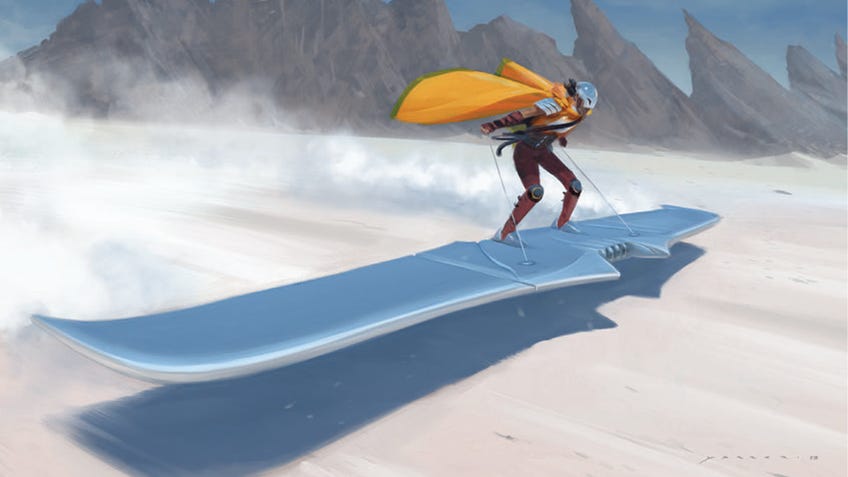
Game designer Monte Cook, looking to recapture some of the weirdness of the ‘90s Planescape setting, has credited Moebius as one of the key inspirations behind his dying earth RPG Numenera. “I’ve long been a fan of Moebius’ works,” Cook writes in the very first pages of Numenera’s core rulebook, “in particular his vision of technology, his synthesis of science and mysticism, and his method of infusing his backgrounds with deep, deep history. Every Moebius art piece tells the story of a world with a rich and wonderfully weird past.” Later, in the book’s bibliography, Numenera directly references Moebius’ comics Arzach, The Airtight Garage and The Incal (which he worked on with filmmaker Alejandro Jodorowsky).
Every Moebius art piece tells the story of a world with a rich and wonderfully weird past.
More recently, part and parcel of the “Old School Renaissance”, Luka Rejec's indie hit The Ultraviolet Grasslands combines the idea of a psychedelic road trip with beautiful, colourful line art. In the introductory section of the book Rejec calls Moebius “one of my favorite artists, and an inspiration for The UVG”. Rejec is currently working on a kaleidoscopic follow-up called SEACAT (an acronym for the six stats used), where he once again references Moebius, listing his “mind-bending bande dessinée” Airtight Garage as a key inspiration.
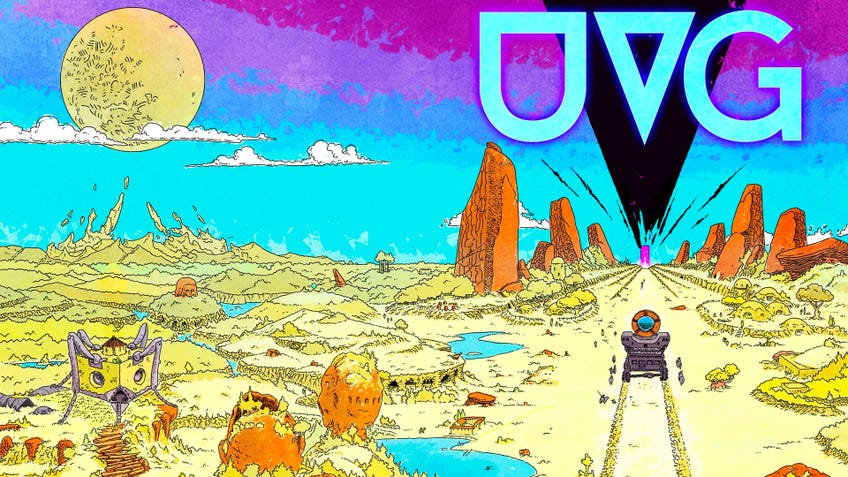
Another beautiful indie RPG is Acid Death Fantasy, written by Luke Gearing and illustrated by David Hoskins. It’s part of the Troika! system - a slightly odd, non-canonical RPG that feels faintly Pythonesque and riffs off of earlier Fighting Fantasy gamebooks. Acid Death Fantasy’s apocalyptic setting is clearly inspired by the vibrant landscapes of Moebius' Arzach, but also the high strangeness of Frank Herbert’s desert sci-fi novel Dune (as well as Jodorowsky’s film adaptation, which Moebius storyboarded before the project’s cancellation).
“After reading Luke’s initial manuscript my mind went straight to Moebius’ work for Jodorowsky’s Dune and Heavy Metal stories like Arzach and Airtight Garage,” Hoskins recalls. “ I knew that’s the direction I wanted to go in. ADF is my love letter to Moebius, with nods to Hayao Miyazaki and Philippe Druillet also.”
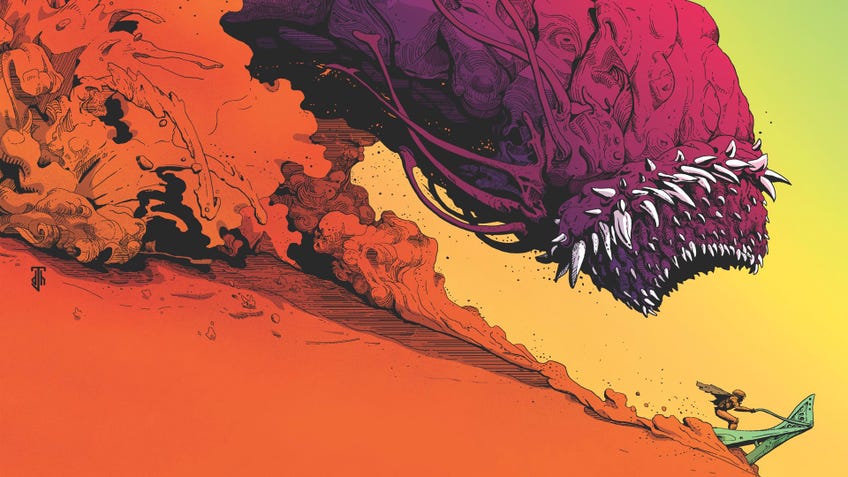
One of the most striking things about Acid Death Fantasy is the cover art, a two-page spread depicting a colossal, multi-toothed worm bearing down on an adventurer riding some sort of hover-skiff over rippling sand dunes. “With a title like Acid Death Fantasy, I knew I wanted it to be bright and fast. I also wanted to try and show the struggle for survival in such a harsh wasteland,” explains Hoskins. “The worm and sand skiff idea came pretty quickly but the composition didn’t really click until I decided to make it a wrap-around cover which allowed me to increase the energy. The explosion, the body arc of the worm, the steepness of the sand - it all came together. ”
Moebius is one of those people that will influence you without you even knowing it.
Hoskins has illustrated plenty of other indie RPGs, from Mörk Borg through to Old School Essentials and Mothership, so I asked him about Moebius’ wider influence on his art. “ADF is the most explicit example [...] but I think even outside of that you can see the imprint of his line work, use of patterns, and, hopefully, a speck of his imagination. Moebius is one of those people that will influence you without you even knowing it,” he says.
Another recent indie tabletop RPG that’s explicit with its Moebius influences is Vaults of Vaarn. On its third issue, the series of zines explores a vast blue desert setting where the sun is dying and the dunes are littered with ruins of the far future, now past. Along with Dune and Gene Wolfe’s The Book of the New Sun novels, Vaults of Vaarn’s draws inspiration from Moebius’ comics. Vaarn’s solo creator, Leo Hunt, praises the French illustrator as “one of the most talented and influential sci-fi and fantasy artists of the 20th century”.
He can take anything - a car, a bird, a time-travelling spacecraft - and imbue it with the same vibrant, dream-like energy.
“What I love about his artwork is that he can do it all - his ink lines are fluid and elegant, his colouring is vibrant and rich, his page compositions are masterful, his character designs and costumes are original and flavourful, and his landscapes are evocative and mysterious. He can take anything - a car, a bird, a time-travelling spacecraft - and imbue it with the same vibrant, dream-like energy.”
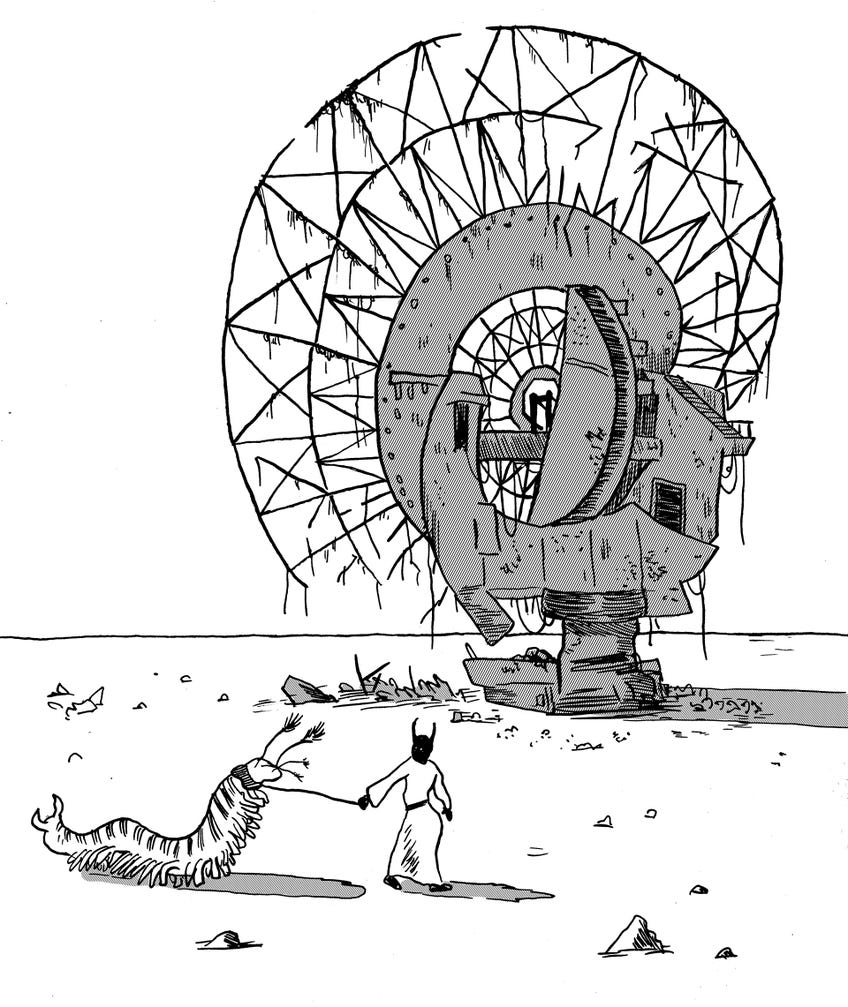
Throughout his life, Moebius would again and again return to the desert landscape. In 1955, Jean Giraud travelled to Mexico to visit his mother, who had moved there after remarrying. What was meant to be a short trip turned into a nine-month love affair, with the dusty flat plains of South America and the endless blue skies there leaving a lasting impression. “It cracked open my soul,” Moebius once said of his time spent there.
On top of his passion for the rugged wildernesses of American westerns, Giraud was conscripted into the French military in 1959 and, for a time, sent overseas to Algeria to fight against the country’s National Liberation Front (although he avoided frontline service, instead working on the French army magazine). Because of these experiences, the desert landscape became like a recurring dream for Moebius, cropping up in everything from his early cowboy comic Blueberry to the shamanistic 40 Days in the Desert B.
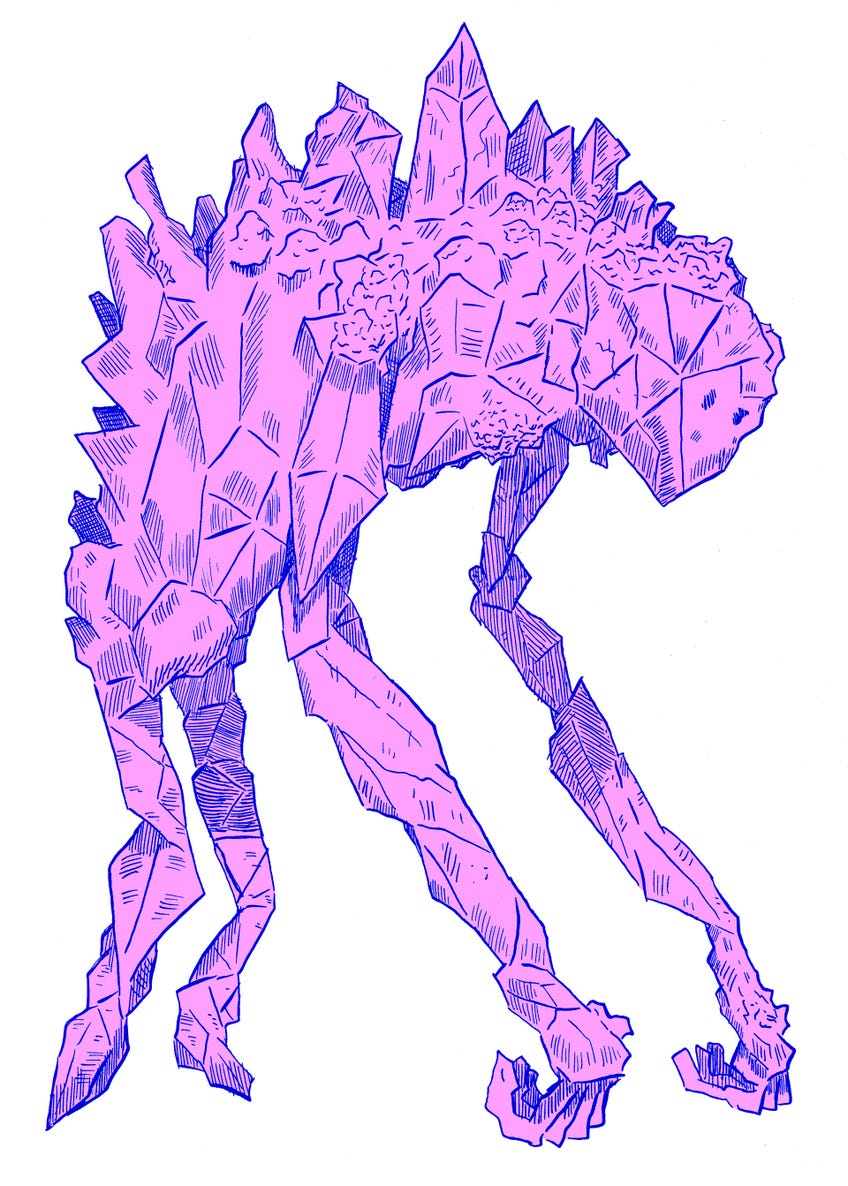
“I noticed that a few of Moebius’ paintings feature a vast desert of blue sand, dotted with strange statues and buildings,” Hunt explains. “I decided that this desert was called Vaarn, and that I was going to set my RPG campaign within the world suggested to me by these images. [...] His drawings suggest a coherent world, but an enigmatic and strange one that invites elaboration.”
For something to be Moebius-like, it has to embrace that psychedelic, dream-like, mystical dimension.
Hunt also points to Moebius's concept art for Jodorowsky’s Dune: “That was another touchstone - his colourful, ornate, decadent visualisation of the characters in Herbert’s novel is something I’ve tried to bring to life in my zines. I used his art in my early blog posts because it was the quickest way to convey the atmosphere I was aiming for. Vaarn would not exist at all without Moebius’ artwork.”
With Vaults of Vaarn, Moebius’ inspiration extends beyond just complimentary aesthetics. There are many elements in the setting and story that point to his influence. “A key element of the Moebius atmosphere is the heady dose of psychedelia and surrealism he brings to his science-fiction artwork,” Hunt explains. “I see him in a way as a bridge between European surrealists like Dali, Ernst or Klint, and the art you’d see on the covers of mid-century American pulp magazines. There’s something dream-like and timeless about the images he produces - they’re futuristic, but they often feature anachronistic early-20th century machinery and outfits as well. There’s a sense that these scenes erupt directly from his subconscious, and are then rendered for us by an unerring draftsman's hand. I think that for something to be Moebius-like, it has to embrace that psychedelic, dream-like, mystical dimension.”
Alongside The Ultraviolet Grasslands and Acid Death Fantasy, Vaults of Vaarn represents a fresh new wave of tabletop RPGs inspired by the works of Moebius - and unafraid to be bizarre. I was curious as to why his art in particular seemed to prove such fertile ground for these games. “There certainly seems to be a fair amount of interest in that strain of polychrome, psychedelic science-fantasy within indie TTRPGs at the moment. I wonder if this is partly due to the buzz around the upcoming Dune film,” Hunt tells me. “I also think that Moebius’ artwork, by virtue of its joyful surrealism and mystical nature, is always going to speak to some writers and artists who will then want to put their own meaning into those images. They leave lots of space for your imagination to wander, which is the most important thing when you’re looking for inspiration.”
Hoskins thinks along similar lines: “One of Moebius’ greatest strengths that elevates him above just being a great craftsman is that most of his drawings have some kind of detail that invites world-building. A crystal in the desert, a spire in the distance, the pattern on a tunic, a very stylized hat. Something about the way he does it just sparks your imagination. And imagination is TTRPG fuel.”


